
 Launched on November 23rd, 1963 on BBC1, Doctor Who‘s travels through time were originally conceived as a family-friendly adventure series aimed at acquainting children with history. The basic concept of an old man – “possibly Oriental” according to the original character sketch – traveling through space and time in a fantastic ship bigger on the inside than the outside was originally delivered to the BBC by Sydney Newman. A Canadian-born producer who had recently defected to the BBC from an Australian network, Newman had struck an immediate nerve in British television with the modern-day drama Armchair Theatre. For an encore, Newman wanted to venture into the realm of science fiction, but his aim there was also Earthbound: Doctor Who would take his timeship full of companions on journeys through our own history, not on voyages to other worlds. In fact, Newman wasn’t against any visits to futuristic Earth, so long as they had some redeeming educational value and didn’t feature – as he put it – “bug-eyed monsters.”
Launched on November 23rd, 1963 on BBC1, Doctor Who‘s travels through time were originally conceived as a family-friendly adventure series aimed at acquainting children with history. The basic concept of an old man – “possibly Oriental” according to the original character sketch – traveling through space and time in a fantastic ship bigger on the inside than the outside was originally delivered to the BBC by Sydney Newman. A Canadian-born producer who had recently defected to the BBC from an Australian network, Newman had struck an immediate nerve in British television with the modern-day drama Armchair Theatre. For an encore, Newman wanted to venture into the realm of science fiction, but his aim there was also Earthbound: Doctor Who would take his timeship full of companions on journeys through our own history, not on voyages to other worlds. In fact, Newman wasn’t against any visits to futuristic Earth, so long as they had some redeeming educational value and didn’t feature – as he put it – “bug-eyed monsters.”
To this end, Newman and the BBC entrusted the Doctor Who concept to Verity Lambert, a young producer (and, atypically at the time for that job, a woman) with the drive and vision to shepherd the series through the then-normal 52-week production schedule, effectively keeping the show on the air year-round. Lambert latched onto the more fantastical concepts of her new project, seeking the highest technical expertise that the British Broadcasting Corporation had to offer. Finding scripts to keep the show fueled for a year-long production run, however, was a formidable task. So was the casting of the lead role of the Doctor, now envisioned as an eccentric, temperamental old man whose origins were unknown. At this stage, none of the staples of the show’s mythology had been developed, especially not the character’s origins among a race known as the Time Lords (something which wouldn’t even be hinted at until six years into the show’s run), though early drafts of the pilot script indicated that the Doctor and his granddaughter Susan were probably not human – or, if they were, they were from the distant future, and not a very pleasant one at that. But no further exploration of the character’s background was anticipated at the time.
Nor was a sudden dearth of scripts. Historical briefs were assigned to writers: the Doctor would visit the cavemen and watch humans discover fire. He would witness the epic journey of Marco Polo, and visit the savage yet advanced tribe of the Aztecs. But a looming production schedule and a writer failing to complete his assignment left Lambert and script editor Dennis Spooner in a bind. A call for a new script to fill the sudden seven-episode gap resulted in new work for an out-of-work comedy writer named Terry Nation. Keen to write something serious for a change, and to provide something to fill the series’ brief for educationally and socially redeeming show, Nation turned in a script set in the distant future of a planet called Skaro, where a Nazi-like alien race meted out unjustified retribution against a smaller, peacefull population. The parallels to Nazi Germany and the Holocaust didn’t go unnoticed, but what caused Sydney Newman to balk at Nation’s script was his description of the aggressors: the Daleks were, in Newman’s mind, the very bug-eyed monsters he sought to avoid. But Verity Lambert was adamant and overrode his objections to prevent a costly production delay that could have ended the series prematurely. Nation’s Daleks would appear five weeks into Doctor Who’s broadcast run.



 The pilot episode, An Unearthly Child, was not without its own problems. The core cast of veteran stage, TV and film actor William Hartnell (the Doctor), Carole Ann Ford (Susan), William Russell (Ian Chesterson) and Jacqueline Hill (Barbara Wright) had been assembled, and the pilot had been taped. But neither Verity Lambert nor Sydney Newman were happy with the result. Hartnell’s portrayal of the Doctor was too ill-tempered, and more frustratingly, numerous technical difficulties occurred which fell short of the BBC’s standards. But the premise was sound enough that the BBC ordered an unprecedented remount of the pilot: it would be recorded anew from scratch. Hartnell’s portrayal became more crotchety and less mean-spirited in rehearsals, and the script was adjusted as well – perhaps most important pegging the Doctor and Susan’s origins as “from another time…another world” instead of the pilot’s line that they came from 49th century Earth!
The pilot episode, An Unearthly Child, was not without its own problems. The core cast of veteran stage, TV and film actor William Hartnell (the Doctor), Carole Ann Ford (Susan), William Russell (Ian Chesterson) and Jacqueline Hill (Barbara Wright) had been assembled, and the pilot had been taped. But neither Verity Lambert nor Sydney Newman were happy with the result. Hartnell’s portrayal of the Doctor was too ill-tempered, and more frustratingly, numerous technical difficulties occurred which fell short of the BBC’s standards. But the premise was sound enough that the BBC ordered an unprecedented remount of the pilot: it would be recorded anew from scratch. Hartnell’s portrayal became more crotchety and less mean-spirited in rehearsals, and the script was adjusted as well – perhaps most important pegging the Doctor and Susan’s origins as “from another time…another world” instead of the pilot’s line that they came from 49th century Earth!
With a masterfully-arranged Ron Grainer theme tune (brought to life in the BBC Radiophonic Workshop studios by Delia Derbyshire, without the use of a single conventional musical instrument) and a mysterious swirl of video feedback, Doctor Who premiered at 5:15pm on November 23rd – and went mostly ignored due to news of the assassination of President John F. Kennedy. To protect its investment in what was becoming a technically advanced and therefore costly production, the BBC aired a repeat of An Unearthly Child, attracting a decent but not overwhelming audience to the series before the second episode aired. (In those days, each weekly episode had a different title; for reference purposes, these early stories are generally referred to by a blanket title which may or may not also be the title of the story’s first episode.)
 In its fifth week, Doctor Who started a new seven-part story, Terry Nation’s The Daleks. At the end of part one, TARDIS traveler Barbara was seen cornered by the famous plunger-tipped arm, and it would be the following Saturday night before the Daleks were revealed in full. In only its second story, Doctor Who had ventured into the future on a planet other than Earth, complete with bug-eyed monsters – but the audience figures from The Daleks reportedly led Sydney Newman to drop his objections and give Verity Lambert carte blanche. And if Newman had tried to veto future visits to strange new worlds? The BBC was already deluged with license requests from toy companies, candymakers, children’s clothing manufacturers…and the series’ ratings more than doubled. Dalekmania was, for a brief time, as all-pervading as Beatlemania. Another set of Terry Nation scripts was quickly commissioned – and they were set in the future and featured unearthly creatures too.
In its fifth week, Doctor Who started a new seven-part story, Terry Nation’s The Daleks. At the end of part one, TARDIS traveler Barbara was seen cornered by the famous plunger-tipped arm, and it would be the following Saturday night before the Daleks were revealed in full. In only its second story, Doctor Who had ventured into the future on a planet other than Earth, complete with bug-eyed monsters – but the audience figures from The Daleks reportedly led Sydney Newman to drop his objections and give Verity Lambert carte blanche. And if Newman had tried to veto future visits to strange new worlds? The BBC was already deluged with license requests from toy companies, candymakers, children’s clothing manufacturers…and the series’ ratings more than doubled. Dalekmania was, for a brief time, as all-pervading as Beatlemania. Another set of Terry Nation scripts was quickly commissioned – and they were set in the future and featured unearthly creatures too.
They weren’t the only ones, either. In his first year of TV adventures, the Doctor, with Susan, Ian and Barbara, witnessed the French Revolution and the brutal nobility of the Aztecs, but he also met the telepathic Sensorites. On average, the futuristic voyages of the TARDIS scored higher in the ratings than its historical explorations. As Verity Lambert made plans for the second year of the series, she discussed a return of the Daleks with Terry Nation – and in general tipped the scales toward science fiction instead of history. Other changes were afoot as well: the second season opener, Planet Of Giants, dealt with an unscrupulous scientist unleashing an untested pesticide on the world, mindless of its deadly side-effects. So far, Doctor Who had only been faced with the theoretical dilemma of time travelers meddling in history. This was but the first sign of a growing sense of the character’s social conscience on a more relatable level.
The Daleks did indeed return in the next adventure, The Dalek Invasion Of Earth, but when they were beaten back this time, a member of the TARDIS crew stayed behind as well, as the Doctor left his granddaughter Susan on Earth to help rebuild after the invasion. In the very next adventure, the two-part The Rescue, the TARDIS crew status quo was returned with the introduction of Vicki. Later that season, Ian and Barbara stayed on modern-day Earth after another brush with the Daleks in The Chase, which also saw a new companion arrive in the form of astronaut Steven Taylor. The story after The Chase, The Time Meddler, closed the season after pitting the Doctor against the Monk, a member of the same advanced society who possessed his own time-traveling TARDIS.
For its third season, a massive Dalek epic was in the works for Doctor Who. Of the nine multi-episode stories shown, only three were firmly rooted in Earth history, with a fourth, set in the modern day, foreshadowing the UNIT stories of the 1970s. Companions again came and went, with the 12-episode Daleks’ Master Plan introducing the previously unthinkable plot development of some of the Doctor’s companions being killed during their adventures. This season also provided Doctor Who with its lowest ebb thus far: The Gunfighters, a low-rated Western set during the gunfight at the OK Corral. But series star William Hartnell, who had tirelessly made public appearances in character to promote the show for three years, was also hitting his own low ebb. He was suffering from the onset of multiple sclerosis, taking its toll on his physical and mental endurance. A fiercely moral individual in his own right, Hartnell also objected to the increasingly dark storylines, a complaint likely brought about by the draining twelve-week battle with the Daleks. The Doctor himself, it seemed, no longer felt the series was suitable for children.
By this time, Verity Lambert had vacated the producer’s seat, and Innes Lloyd had taken over. Unable to come to an agreement with Hartnell over the show’s content, and fully aware that the actor’s physical condition would eventually prevent him from playing the part, Lloyd made unprecedented plans to replace the lead actor with someone who looked nothing like him. Not sure of the “scientific” explanation that would be given for this transformation, and unsure if the series would even survive it, Lloyd relentlessly pursued character actor Patrick Troughton to take over the role. After several refusals, Troughton finally gave in when more money was offered – and he was certain the jarring change of casting would doom the series after mere weeks.
During planning for the show’s fourth season, script editor Gerry Davis – along with Dr. Kit Pedler, an imaginative scientist tapped as the show’s science advisor for its increasingly futuristic stories – brainstormed with series creator Sydney Newman to find an explanation for a change in the Doctor’s appearance – and his character. It was finally settled that the transformation was a kind of renewal, probably a function of the TARDIS (and something that couldn’t possibly take place outside of it), and something that the Doctor’s now decidedly alien race did whenever mortally wounded or exhausted. Troughton was convinced not to insist on heavy makeup or costumes. And a new adversary was invented to see the original Doctor out in style.
Davis and Pedler imagined a race very much like human beings who, after progressively replacing more and more of their bodies with prosthetic limbs and artificial organs, would be more computer than man. 22 years before the Borg were invented for Star Trek: The Next Generation, the Doctor’s new arch nemesis would be the Cybermen, and like their latter day counterparts, the Cybermen sought to enslave humanity to convert every man, woman and child into more Cybermen. At the end of their debut adventure, The Tenth Planet, the Cybermen were of course fended off from their planned invasion of Earth. But the Doctor, exhausted, staggered back to the TARDIS and literally changed into a new man. It was October 29th, 1966, not even two months after the U.S. premiere of a science fiction series called Star Trek, and the Doctor had just regenerated for the first time – though nobody called it that yet. And to make sure that the change stuck, Innes Lloyd had arranged for the “new” Doctor’s first adventure to feature – of course – the Daleks.
Season One: 1963-64
- An Unearthly Child
- The Daleks
- The Edge Of Destruction
- Marco Polo
- The Keys Of Marinus
- The Aztecs
- The Sensorites
- The Reign Of Terror
Season 2: 1964-65
- Planet Of Giants
- The Dalek Invasion Of Earth
- The Rescue
- The Romans
- The Web Planet
- The Crusade
- The Space Museum
- The Chase
- The Time Meddler
Season 3: 1965-66
- Galaxy Four
- Mission To The Unknown
- The Myth Makers
- The Daleks’ Masterplan
- The Massacre
- The Ark
- The Celestial Toymaker
- The Gunfighters
- The Savages
- The War Machines
Season 4: 1966-67
- The Smugglers
- The Tenth Planet
Introduction written by Earl Green
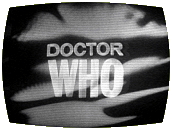 In London, 1963, teachers Ian Chesterton and Barbara Wright discuss their most problematic student at Coal Hill School, one Susan Foreman. Susan’s knowledge vastly exceeds that of her instructors in science, but she has also been known to challenge long-standing historical facts…yet she also has some things completely wrong, including one occasion where she notes that British currency isn’t on the decimal system “yet.” Ian and Barbara follow Susan discreetly when she walks home one night, and the teachers are puzzled when home seems to be a junkyard. When they follow her into the junkyard, Susan has disappeared, and the only place she could have gone is a police call box which is emitting a strange hum. Moments later, an elderly man appears, apparently determined to enter the police box himself. Ian and Barbara force their way in, along with the old man, and find that the police box is actually a time-space vehicle, bigger on the inside than out. They also discover that neither Susan nor her grandfather, a mysterious and irritable man known only as the Doctor, are human beings. The Doctor, worried that Ian and Barbara will draw unwelcome mass attention to the presence of his ship (called the TARDIS), hastily sets it into motion over everyone’s protests, and when Ian and Barbara next step out of the doors of the TARDIS, they are no longer on Earth as they know it.
In London, 1963, teachers Ian Chesterton and Barbara Wright discuss their most problematic student at Coal Hill School, one Susan Foreman. Susan’s knowledge vastly exceeds that of her instructors in science, but she has also been known to challenge long-standing historical facts…yet she also has some things completely wrong, including one occasion where she notes that British currency isn’t on the decimal system “yet.” Ian and Barbara follow Susan discreetly when she walks home one night, and the teachers are puzzled when home seems to be a junkyard. When they follow her into the junkyard, Susan has disappeared, and the only place she could have gone is a police call box which is emitting a strange hum. Moments later, an elderly man appears, apparently determined to enter the police box himself. Ian and Barbara force their way in, along with the old man, and find that the police box is actually a time-space vehicle, bigger on the inside than out. They also discover that neither Susan nor her grandfather, a mysterious and irritable man known only as the Doctor, are human beings. The Doctor, worried that Ian and Barbara will draw unwelcome mass attention to the presence of his ship (called the TARDIS), hastily sets it into motion over everyone’s protests, and when Ian and Barbara next step out of the doors of the TARDIS, they are no longer on Earth as they know it.written by Anthony Coburn

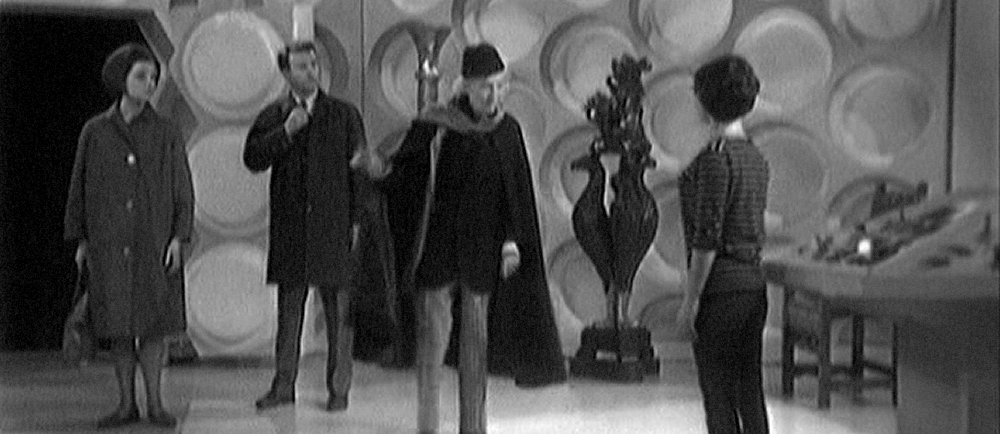
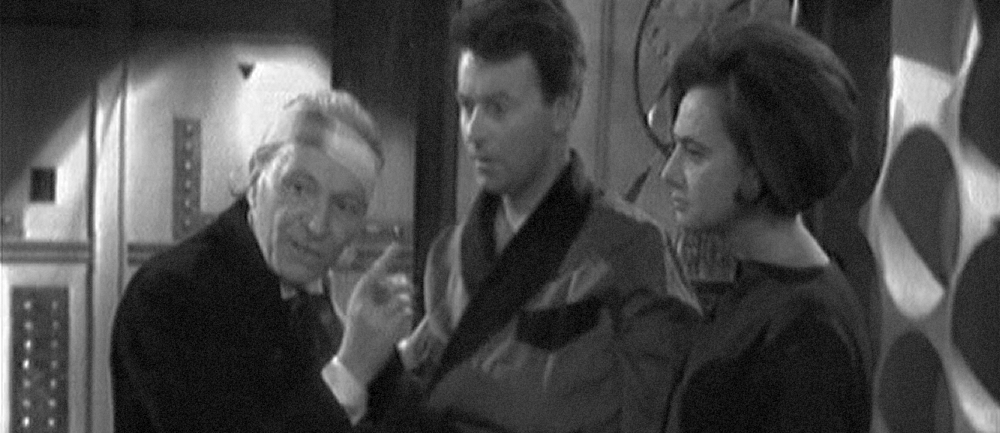

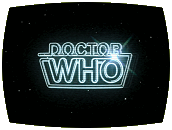
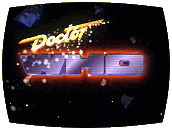
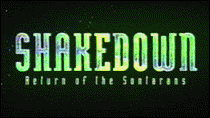
 On the planet Gallifrey, oblivious to the coming inauguration of the new President of the High Council, an author known only as the Doctor spends most of his days in an illegal Possibility Generator, researching and reliving events from the history of a primitive world called Earth, upon which his books are based. As his robotic drudge Badger tends to his needs, the Doctor stays in seclusion and fends off the recurring visits of his dreaded great-grand-uncle, Ordinal-General Quences, who has long harbored an ambition of maneuvering the Doctor into the presidency to gain prestige and influence for their family. Another member of the Doctor’s family, claiming to be his great granddaughter Susan, appears, and the Doctor learns that Susan is the new President-elect, and Quences hopes to follow her into a life of prestige. Having dreamt for years of stealing a TARDIS and fleeing Gallifrey with Susan under his wing, the Doctor finally rebels against Quences by overloading the Possibility Generator and flooding the Capitol with its alternate realities. Now, at last, perhaps the Doctor can escape his staid life – or perhaps he won’t. And perhaps Susan will come with him – or perhaps she won’t.
On the planet Gallifrey, oblivious to the coming inauguration of the new President of the High Council, an author known only as the Doctor spends most of his days in an illegal Possibility Generator, researching and reliving events from the history of a primitive world called Earth, upon which his books are based. As his robotic drudge Badger tends to his needs, the Doctor stays in seclusion and fends off the recurring visits of his dreaded great-grand-uncle, Ordinal-General Quences, who has long harbored an ambition of maneuvering the Doctor into the presidency to gain prestige and influence for their family. Another member of the Doctor’s family, claiming to be his great granddaughter Susan, appears, and the Doctor learns that Susan is the new President-elect, and Quences hopes to follow her into a life of prestige. Having dreamt for years of stealing a TARDIS and fleeing Gallifrey with Susan under his wing, the Doctor finally rebels against Quences by overloading the Possibility Generator and flooding the Capitol with its alternate realities. Now, at last, perhaps the Doctor can escape his staid life – or perhaps he won’t. And perhaps Susan will come with him – or perhaps she won’t.
 Martin Bannister, in 1961, was voted one of the Times‘ ten most promising young writers for his innovative stage plays. But he tried to venture into television, and was recruited for a new BBC science fiction program called Doctor Who. Despite his extraordinary efforts to define the show’s characters, themes and parameters, Martin watched as Doctor Who made it as far as one failed pilot episode before being abandoned by the BBC. Now, 40 years later, Martin is confined to a nursing home, subjected to unsettling visits by his adult son, who’s still bitter that Martin divorced his mother when he was only six. Martin isn’t sure what is the truth and what isn’t from what his son tells him, and this isn’t the only place he’s having problems with reality – he imagines a burgeoning romance with a nurse, he imagines that he’s being tapped to write the celebratory 40th anniversary comeback of Doctor Who (but why celebrate a show that was never made?), and he imagines that he is the Doctor, that most mysterious traveler in time and space. Will Martin Bannister trade his unpromising reality for an unrealized fantasy?
Martin Bannister, in 1961, was voted one of the Times‘ ten most promising young writers for his innovative stage plays. But he tried to venture into television, and was recruited for a new BBC science fiction program called Doctor Who. Despite his extraordinary efforts to define the show’s characters, themes and parameters, Martin watched as Doctor Who made it as far as one failed pilot episode before being abandoned by the BBC. Now, 40 years later, Martin is confined to a nursing home, subjected to unsettling visits by his adult son, who’s still bitter that Martin divorced his mother when he was only six. Martin isn’t sure what is the truth and what isn’t from what his son tells him, and this isn’t the only place he’s having problems with reality – he imagines a burgeoning romance with a nurse, he imagines that he’s being tapped to write the celebratory 40th anniversary comeback of Doctor Who (but why celebrate a show that was never made?), and he imagines that he is the Doctor, that most mysterious traveler in time and space. Will Martin Bannister trade his unpromising reality for an unrealized fantasy?
 Launched on November 23rd, 1963 on BBC1, Doctor Who‘s travels through time were originally conceived as a family-friendly adventure series aimed at acquainting children with history. The basic concept of an old man – “possibly Oriental” according to the original character sketch – traveling through space and time in a fantastic ship bigger on the inside than the outside was originally delivered to the BBC by Sydney Newman. A Canadian-born producer who had recently defected to the BBC from an Australian network, Newman had struck an immediate nerve in British television with the modern-day drama Armchair Theatre. For an encore, Newman wanted to venture into the realm of science fiction, but his aim there was also Earthbound: Doctor Who would take his timeship full of companions on journeys through our own history, not on voyages to other worlds. In fact, Newman wasn’t against any visits to futuristic Earth, so long as they had some redeeming educational value and didn’t feature – as he put it – “bug-eyed monsters.”
Launched on November 23rd, 1963 on BBC1, Doctor Who‘s travels through time were originally conceived as a family-friendly adventure series aimed at acquainting children with history. The basic concept of an old man – “possibly Oriental” according to the original character sketch – traveling through space and time in a fantastic ship bigger on the inside than the outside was originally delivered to the BBC by Sydney Newman. A Canadian-born producer who had recently defected to the BBC from an Australian network, Newman had struck an immediate nerve in British television with the modern-day drama Armchair Theatre. For an encore, Newman wanted to venture into the realm of science fiction, but his aim there was also Earthbound: Doctor Who would take his timeship full of companions on journeys through our own history, not on voyages to other worlds. In fact, Newman wasn’t against any visits to futuristic Earth, so long as they had some redeeming educational value and didn’t feature – as he put it – “bug-eyed monsters.”


 The pilot episode, An Unearthly Child, was not without its own problems. The core cast of veteran stage, TV and film actor William Hartnell (the Doctor), Carole Ann Ford (Susan), William Russell (Ian Chesterson) and Jacqueline Hill (Barbara Wright) had been assembled, and the pilot had been taped. But neither Verity Lambert nor Sydney Newman were happy with the result. Hartnell’s portrayal of the Doctor was too ill-tempered, and more frustratingly, numerous technical difficulties occurred which fell short of the BBC’s standards. But the premise was sound enough that the BBC ordered an unprecedented remount of the pilot: it would be recorded anew from scratch. Hartnell’s portrayal became more crotchety and less mean-spirited in rehearsals, and the script was adjusted as well – perhaps most important pegging the Doctor and Susan’s origins as “from another time…another world” instead of the pilot’s line that they came from 49th century Earth!
The pilot episode, An Unearthly Child, was not without its own problems. The core cast of veteran stage, TV and film actor William Hartnell (the Doctor), Carole Ann Ford (Susan), William Russell (Ian Chesterson) and Jacqueline Hill (Barbara Wright) had been assembled, and the pilot had been taped. But neither Verity Lambert nor Sydney Newman were happy with the result. Hartnell’s portrayal of the Doctor was too ill-tempered, and more frustratingly, numerous technical difficulties occurred which fell short of the BBC’s standards. But the premise was sound enough that the BBC ordered an unprecedented remount of the pilot: it would be recorded anew from scratch. Hartnell’s portrayal became more crotchety and less mean-spirited in rehearsals, and the script was adjusted as well – perhaps most important pegging the Doctor and Susan’s origins as “from another time…another world” instead of the pilot’s line that they came from 49th century Earth! In its fifth week, Doctor Who started a new seven-part story, Terry Nation’s The Daleks. At the end of part one, TARDIS traveler Barbara was seen cornered by the famous plunger-tipped arm, and it would be the following Saturday night before the Daleks were revealed in full. In only its second story, Doctor Who had ventured into the future on a planet other than Earth, complete with bug-eyed monsters – but the audience figures from The Daleks reportedly led Sydney Newman to drop his objections and give Verity Lambert carte blanche. And if Newman had tried to veto future visits to strange new worlds? The BBC was already deluged with license requests from toy companies, candymakers, children’s clothing manufacturers…and the series’ ratings more than doubled. Dalekmania was, for a brief time, as all-pervading as Beatlemania. Another set of Terry Nation scripts was quickly commissioned – and they were set in the future and featured unearthly creatures too.
In its fifth week, Doctor Who started a new seven-part story, Terry Nation’s The Daleks. At the end of part one, TARDIS traveler Barbara was seen cornered by the famous plunger-tipped arm, and it would be the following Saturday night before the Daleks were revealed in full. In only its second story, Doctor Who had ventured into the future on a planet other than Earth, complete with bug-eyed monsters – but the audience figures from The Daleks reportedly led Sydney Newman to drop his objections and give Verity Lambert carte blanche. And if Newman had tried to veto future visits to strange new worlds? The BBC was already deluged with license requests from toy companies, candymakers, children’s clothing manufacturers…and the series’ ratings more than doubled. Dalekmania was, for a brief time, as all-pervading as Beatlemania. Another set of Terry Nation scripts was quickly commissioned – and they were set in the future and featured unearthly creatures too.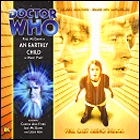 20 years after the Daleks were driven off of 22nd century Earth, Susan Campbell still lives among humans. Her human husband has long since died, leaving her to raise her son Alex in a world that had grown paranoid, fearful of another alien invasion. Susan is outspoken in her opposition to the anti-alien Earth United movement… of which Alex is a member. The Doctor arrives to check up on his granddaughter, and finds that humanity has reverted to a Luddite mentality, destroying technology and working to avoid any contact with alien life. Susan has called upon an alien race to render aid to humanity, without consulting what passes for the planet’s government. But Earth United’s tendrils reach inside the government, and there are plans afoot to use Alex against his activist mother. The friendly aliens turn out to be the first wave of another invasion, which plays right into Earth United’s hands… but how much credibility will Alex Campbell have among his xenophobic friends when his great-grandfather and his mother are revealed to be from another world?
20 years after the Daleks were driven off of 22nd century Earth, Susan Campbell still lives among humans. Her human husband has long since died, leaving her to raise her son Alex in a world that had grown paranoid, fearful of another alien invasion. Susan is outspoken in her opposition to the anti-alien Earth United movement… of which Alex is a member. The Doctor arrives to check up on his granddaughter, and finds that humanity has reverted to a Luddite mentality, destroying technology and working to avoid any contact with alien life. Susan has called upon an alien race to render aid to humanity, without consulting what passes for the planet’s government. But Earth United’s tendrils reach inside the government, and there are plans afoot to use Alex against his activist mother. The friendly aliens turn out to be the first wave of another invasion, which plays right into Earth United’s hands… but how much credibility will Alex Campbell have among his xenophobic friends when his great-grandfather and his mother are revealed to be from another world?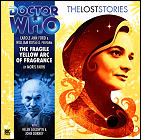
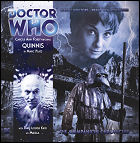 Still moving from place to place after leaving their home planet, the Doctor and Susan arrive on the planet Quinnis, a world in the fourth universe. The TARDIS has landed in a market square, and the haggard-looking people of Quinnis seem ready to sell the time travelers anything in exchange for curiosities from their travels – but especially water, as rain has become a rarity. The Doctor quickly grows impatient with the primitive state of scientific knowledge, but is amazed by the local architecture: the town is a vertical maze of unfinished bridges, and the dwellings along its streets are boats, permanently moored to the bridges. Since he’s already performed one miracle – the TARDIS appearing out of thin air – the Doctor is mistaken for a rainmaker, and his protests to the contrary are ignored. The locals want him to make it rain – or else – to trigger their planet’s brief harvest. But even the bountiful vegetation on the ground level could prove to be deadly, especially when the ensuing monsoon washes the TARDIS away.
Still moving from place to place after leaving their home planet, the Doctor and Susan arrive on the planet Quinnis, a world in the fourth universe. The TARDIS has landed in a market square, and the haggard-looking people of Quinnis seem ready to sell the time travelers anything in exchange for curiosities from their travels – but especially water, as rain has become a rarity. The Doctor quickly grows impatient with the primitive state of scientific knowledge, but is amazed by the local architecture: the town is a vertical maze of unfinished bridges, and the dwellings along its streets are boats, permanently moored to the bridges. Since he’s already performed one miracle – the TARDIS appearing out of thin air – the Doctor is mistaken for a rainmaker, and his protests to the contrary are ignored. The locals want him to make it rain – or else – to trigger their planet’s brief harvest. But even the bountiful vegetation on the ground level could prove to be deadly, especially when the ensuing monsoon washes the TARDIS away.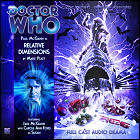 Determined to make amends for the Christmas that he ruined for her in 2009 – the Christmas that made her decide to leave the TARDIS – the Doctor offers to provide Lucie with a more relaxed Yuletide holiday, taking her to Earth’s future to celebrate with his family for a change. Susan Campbell, still helping to rebuild the Earth and raising her son Alex, is surprised to see the TARDIS show up on schedule. For his part, Alex is still coming to grips with the fact that his mother is an “alien,” and his great-grandfather travels through time and space in a police box. As Lucie dives headfirst into preparations for a perfect Christmas, Susan’s fears about Alex’s future come to the surface: she’s worried that he’ll want to travel with the Doctor instead of staying on Earth to take part in the reconstruction effort. And deep in the TARDIS, something dating back to Susan’s travels with the first Doctor is about to crash the party.
Determined to make amends for the Christmas that he ruined for her in 2009 – the Christmas that made her decide to leave the TARDIS – the Doctor offers to provide Lucie with a more relaxed Yuletide holiday, taking her to Earth’s future to celebrate with his family for a change. Susan Campbell, still helping to rebuild the Earth and raising her son Alex, is surprised to see the TARDIS show up on schedule. For his part, Alex is still coming to grips with the fact that his mother is an “alien,” and his great-grandfather travels through time and space in a police box. As Lucie dives headfirst into preparations for a perfect Christmas, Susan’s fears about Alex’s future come to the surface: she’s worried that he’ll want to travel with the Doctor instead of staying on Earth to take part in the reconstruction effort. And deep in the TARDIS, something dating back to Susan’s travels with the first Doctor is about to crash the party.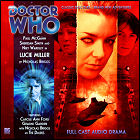 Left on 22nd century Earth to spend time with Susan and Alex, Lucie Miller is almost settling into a normal life of traveling around the world with Alex when the plague hits. A deadly disease wipes out entire countries around the world, though Alex and Susan are immune. Lucie contracts the illness and almost dies; the payoff for surviving is losing the use of her legs, and going blind in one eye. Just when things can’t get any worse, a Dalek invasion force arrives to retake Earth: the true source of the plague, the Daleks intend to finish the job that their first invasion of Earth never did. Alex becomes a leader in the resistance movement against the Daleks and plans a bold strike at the heart of the Daleks’ plan to remove Earth from the solar system. But after all this time, no one expects the Doctor to appear – and certainly no one expects him to appear aboard one of the Daleks’ own ships.
Left on 22nd century Earth to spend time with Susan and Alex, Lucie Miller is almost settling into a normal life of traveling around the world with Alex when the plague hits. A deadly disease wipes out entire countries around the world, though Alex and Susan are immune. Lucie contracts the illness and almost dies; the payoff for surviving is losing the use of her legs, and going blind in one eye. Just when things can’t get any worse, a Dalek invasion force arrives to retake Earth: the true source of the plague, the Daleks intend to finish the job that their first invasion of Earth never did. Alex becomes a leader in the resistance movement against the Daleks and plans a bold strike at the heart of the Daleks’ plan to remove Earth from the solar system. But after all this time, no one expects the Doctor to appear – and certainly no one expects him to appear aboard one of the Daleks’ own ships.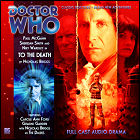 The Doctor miraculously survives the destruction of the Dalek ship on which he’s being held prisoner, but his brief time among the Daleks leaves him riddled with guilt: the Dalek Time Controller, who he thought he had destroyed in the distant future, has traveled back in time to lead the Daleks’ second invasion of Earth. The Doctor learns that the Dalek Time Controller was sucked into the time vortex and had an eternity to observe history and concoct a plan to wipe out all non-Dalek life using a combination of potent viruses, spreading disease through the universe by using Earth as a mobile plague planet. The Doctor plans to take a nuclear bomb that the Monk has stashed away forward in time to correct his error and prevent this chain of events from happening, but Lucie insists on using the nuke in the present to wipe out the Dalek invasion force. For once, the Doctor is in no position to save the world, but he will witness the death of many dear friends and family members as they battle the Daleks without him.
The Doctor miraculously survives the destruction of the Dalek ship on which he’s being held prisoner, but his brief time among the Daleks leaves him riddled with guilt: the Dalek Time Controller, who he thought he had destroyed in the distant future, has traveled back in time to lead the Daleks’ second invasion of Earth. The Doctor learns that the Dalek Time Controller was sucked into the time vortex and had an eternity to observe history and concoct a plan to wipe out all non-Dalek life using a combination of potent viruses, spreading disease through the universe by using Earth as a mobile plague planet. The Doctor plans to take a nuclear bomb that the Monk has stashed away forward in time to correct his error and prevent this chain of events from happening, but Lucie insists on using the nuke in the present to wipe out the Dalek invasion force. For once, the Doctor is in no position to save the world, but he will witness the death of many dear friends and family members as they battle the Daleks without him.